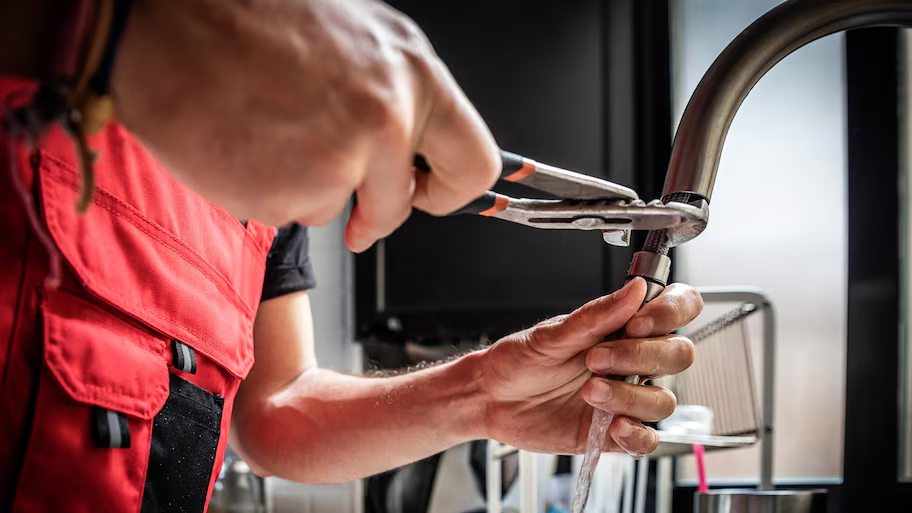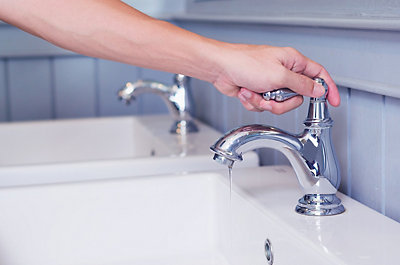Everyone has got their unique idea involving Water Dripping from Faucet: Why and How to Fix.

Dripping taps could appear like a small hassle, but their influence goes beyond just the aggravation of the sound. From drainage to incurring unnecessary monetary expenses and health risks, overlooking a trickling faucet can lead to various repercussions. In this article, we'll look into why it's crucial to resolve this common house concern immediately and effectively.
Waste of Water
Environmental Effect
Trickling taps add significantly to water waste. According to the Epa (EPA), a single faucet leaking at one drip per secondly can waste more than 3,000 gallons of water annually. This not just pressures water resources however likewise impacts ecological communities and wild animals dependent on them.
Financial Costs
Enhanced Water Expenses
Beyond the ecological effect, leaking taps can blow up water costs substantially. The gathered wastage over time translates into higher utility costs, which might have been prevented with timely repair services.
Prospective Property Damage
In addition, prolonged leaking can cause harm to fixtures and surfaces surrounding the tap. Water buildup can cause staining, rust, and even structural problems if left ignored, resulting in additional repair costs.
Health Issues
Mold and Mildew Growth
The continuous existence of moisture from a dripping faucet develops an ideal setting for mold and mildew and mold growth. These fungis not just endanger indoor air top quality however likewise pose health and wellness risks, especially for individuals with breathing conditions or allergies.
Waterborne Conditions
Stagnant water in trickling faucets can end up being a breeding place for bacteria and other microorganisms, raising the threat of waterborne diseases. Contaminants such as Legionella bacteria thrive in stagnant water, potentially resulting in major diseases when ingested or inhaled.
Do it yourself vs. Specialist Repair
Advantages and disadvantages of DIY Repair
While some might try to repair a dripping tap themselves, do it yourself repair work feature their very own set of obstacles. Without correct understanding and devices, do it yourself efforts can aggravate the issue or result in incomplete repair services, extending the trouble.
Advantages of Employing an Expert Plumber
Hiring a professional plumber guarantees that the underlying reason for the dripping faucet is addressed successfully. Plumbing professionals have the know-how and devices to diagnose and fix tap issues effectively, saving time and minimizing the threat of additional damages.
Step-by-Step Overview to Repairing a Dripping Tap
Devices Needed
Before trying to repair a trickling faucet, collect the required devices, consisting of an adjustable wrench, screwdrivers, replacement components (such as washing machines or cartridges), and plumber's tape.
Typical Tap Issues and Their Solutions
Identify the kind of faucet and the details issue creating the drip. Common problems consist of worn-out washing machines, rusty valve seats, or faulty O-rings. Describe supplier instructions or on-line tutorials for detailed assistance on repairs.
Safety nets
Regular Upkeep Tips
To avoid dripping faucets, do routine upkeep such as cleaning aerators, evaluating for leaks, and replacing damaged parts immediately. Additionally, think about mounting water-saving devices or upgrading to a lot more effective components.
Relevance of Prompt Repair Works
Attending to trickling taps as soon as they're discovered avoids additional water waste and possible damage, eventually conserving both water and money in the long run.
Impact on Home Value
Understanding of Well-Maintained Building
Preserving a residential or commercial property in good condition, consisting of dealing with upkeep issues like leaking taps, enhances its viewed worth and desirability among possible buyers or occupants.
Impact on Resale Value
Features with well-maintained plumbing components, consisting of taps, command higher resale values in the realty market. Attending to trickling taps can contribute to a favorable perception throughout property inspections and negotiations.
Environmental Obligation
Private Contribution to Conservation
Taking responsibility for repairing dripping faucets aligns with more comprehensive efforts toward water preservation and ecological sustainability. Every person's actions collectively make a significant influence on protecting valuable resources.
Lasting Living Practices
By prioritizing prompt repair services and embracing water-saving behaviors, individuals add to sustainable living practices that benefit both present and future generations.
Final thought
Attending to a trickling tap goes beyond simple benefit; it's a crucial step towards conserving water, reducing financial expenses, and securing wellness and home. Whether with DIY repairs or specialist help, acting to repair leaking faucets is a tiny yet impactful method to promote responsible stewardship of sources and contribute to a much healthier, a lot more lasting future.
How to Fix a Leaky Faucet: Step-by-Step Repair Guide
A leaky faucet may seem like a simple annoyance, but if it's not fixed promptly, that leak could cost hundreds to potentially thousands. From water damage to mold, mildew, and high water bills, even a tiny leak can be catastrophic if left unattended. Damage like this can even affect the overall value of your home, so it's important to take the right approach for leaky faucet repair. You may need the help of a plumber in some cases, but we've got a few tips you can try on how to fix a leaky faucet before calling the pros.
Four Faucet Types
When you're learning how to fix a leaky faucet, the first step is knowing what kind of faucet you're working with! There are four common types.
Cartridge Faucets
Cartridge faucets come in one- or two-handled varieties. In one-handled cartridge faucets, hot and cold water combines in a single cartridge. In the two-handled versions, hot and cold water are controlled separately and mixed in the faucet.
Ball Faucets
Ball faucets have a single lever you push up and down to adjust the pressure and rotate to change the temperature. A slotted metal ball controls the amount of water allowed into the spout.
Compression Washer Faucets
They're the oldest type of faucet, but they're still used in many homes — especially older ones. Compression faucets have two separate handles that, when turned, raise or lower the washer that seals a water valve. This valve stops water from flowing through the faucet when it is turned off.
Disc Faucets
Disc faucets rarely need to be repaired due to their maintenance-free design. The water flow is controlled by two discs — the upper one raises and lowers against a fixed lower disc, creating a watertight seal. If your disc faucet starts leaking, you may need to replace the seals or clean residue buildup from the inlets.
Fixing a Leaky Faucet
Step 1: Turn Off the Water
Whether you're learning how to fix a leaky bathtub faucet or how to fix a leaky kitchen faucet, always turn off the water supply to your working area when you're fixing a leak. The last thing you want is a flood added to your list of things to fix.
Look for the shutoff valves below your sink or around the tub and turn them clockwise to stop the water flow. If your faucet doesn't have shutoff valves, you may need to turn off the water for the whole house. Check to make sure it's off by turning the faucet on. If nothing comes out, you're ready to start the repair.
Step 2: Take Apart the Faucet
How you disassemble your faucet depends on the type of fixture you have. You can use a flathead screwdriver to remove the caps on top of the handle or handles for cartridge and compression faucets. Inside, you should see handle screws. Unscrew these with a screwdriver to remove the handle.
Disc- and ball-style faucets will typically have an inlet screw near the handle, and removing that will reveal the interior of the faucet.
Detach the Valve Stem
For cartridge- and compression-style faucets, you'll see the inner valve stem or cartridge once you remove the faucet handles. If you have a compression faucet, unscrew the brass valve stem. If you have a cartridge faucet, pull out the cartridge. If your cartridge has been in place for a while, it may require some tools or extra force to remove it due to mineral deposits.
Examine and Replace Parts
Once you've removed the parts, check them out to confirm what needs to be replaced. You may see corroded rubber washers, O-rings, stems, or cartridges. On a ball-style faucet, check the seats and springs for damage.
If you need to repair a leaky disc faucet, check the inlet and seals on the lower disc.
Once you determine what parts must be replaced, visit your local hardware store. Bring the damaged parts with you to ensure you can purchase the correct components to replace them.
Clean Valves and Faucet Cavity
If you've removed a stem or cartridge, you may notice mineral buildup in the faucet's threads. Use white vinegar to clean the valve seat by soaking it for a few minutes, then scrub it away with a soft toothbrush and rinse with warm water. You can also clean the interior of the faucet in the same way.
Reassemble the Faucet
Once your faucet is cleaned and the required parts have been replaced, it's time to reassemble it. Put the pieces back together and slowly turn the water supply back on. Doing this slowly is crucial because too much initial water pressure can damage the new hardware you've just installed.
https://homewarranty.firstam.com/blog/how-to-fix-leaky-faucet

I discovered that review about Water Dripping from Faucet: Why and How to Fix while doing a lookup on the web. Be sure to pause to promote this blog post if you enjoyed it. We thank you for your readership.